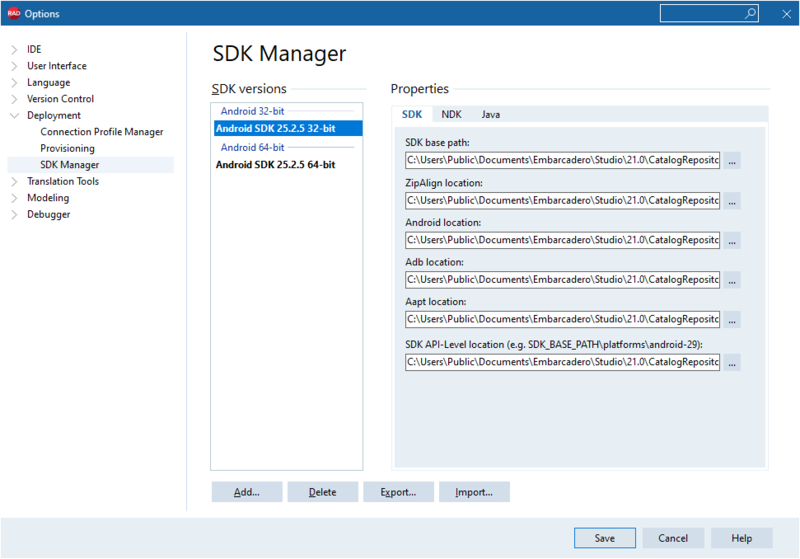Frameworks and Libraries
Go Up to Main Page
A framework is software that you can customize and extend to fit your needs.
A library is a collection of implementations of subroutines, classes, etc. that you can reuse to develop software.
RAD Studio provides several frameworks and libraries that you can use to build your applications. For reference documentation, see the API Reference.
Application Frameworks
Application frameworks are frameworks that you can use to create applications.
One application can only use one application framework. You cannot use more than one application framework to build a single application. Before you start developing an application, you must decide which application framework you want to use.
GUI Application Frameworks
RAD Studio provides two different application frameworks to build graphical user interface (GUI) applications: the VCL and FireMonkey. For more information, see GUI Application Frameworks.
Multi-Tier Application Frameworks
RAD Studio provides the following application frameworks to create multi-tier applications:
| Framework | Description |
|---|---|
|
Mobile enterprise application platform (MEAP) that you can host in the cloud or on the premises, to expose custom REST APIs and enterprise database data. | |
|
Framework to allow client applications to access data and run subroutines of server applications that are on a common network. |
Internet Application Frameworks
RAD Studio provides the following application frameworks to create internet applications:
| Framework | Description |
|---|---|
|
Components to create web servers that can generate content, such as HTML or XML documents, as a response to a request URI. |
Add Frameworks
As FireMokey pulls only some frameworks, your code may require access to more frameworks to compile successfully.
To pull more Frameworks, you must update and refresh the Software Development Kit (SDK) definition.
Before pulling more Frameworks, verify your current frameworks.
Verifying that a framework is pulled.
You can determine that a Framework is pulled by looking into the directory where you pull an SDK. In the directory, there is a folder named Frameworks, usually in the following direction:
Inside the folder, you can find all the pulled frameworks, with the name <Name>.framework. For example, in the following image, you can verify that the SafariServices.framework is pulled.
Pulling Frameworks through the SDK Manager.
Follow the steps below to pull more frameworks through the SDK Manager:
- Select Tools > Options > Deployment > SDK Manager
- Select the SDK version of the platform you are working with.
- In the SDK Manager properties section, a list of Remote Paths is displayed. Click the ellipsis button (…) to change the path.
- Select the correct path framework and click OK.
:
- Check the current properties and click Save.
- Go to the SDK location and verify that the framework was successfully pulled.
Libraries
You can use the following libraries in any application:
- Libraries to access multiple database management systems (DBMS) and other data sources:
- FireDAC (supported data sources)
- dbExpress (supported data sources)
- dbGo (components for ADO)
- InterBase Express (IBX) (components for InterBase)
- Borland Database Engine (BDE) (deprecated)
- Libraries for internet features and services:
- Cloud Service, to make use of Microsoft Azure or Amazon Web Services from your applications.
- REST BaaS, to use the Kinvey and Parse backend-as-a-service (BaaS) providers in your applications.
- REST Client Library, for REST support.
- LiveBindings, an expression-based data-binding library that lets you bind objects to other objects or dataset fields.
- The RTL, a general-purpose library that provides a wide variety of low-level features (streams, files, dates, math, regular expressions, generic programming) and high-level features (networking, multithreading, and more).
Native APIs of Platforms
RAD Studio provides units (Delphi) and header files (C++) that you can use to access the native API of the platform where your application is running:
- Delphi:
C:\Program Files (x86)\Embarcadero\Studio\22.0\source - C++:
C:\Program Files (x86)\Embarcadero\Studio\22.0\include
The Tools API
RAD Studio provides its own API, the Tools API, which allows you to extend the IDE with new features.
